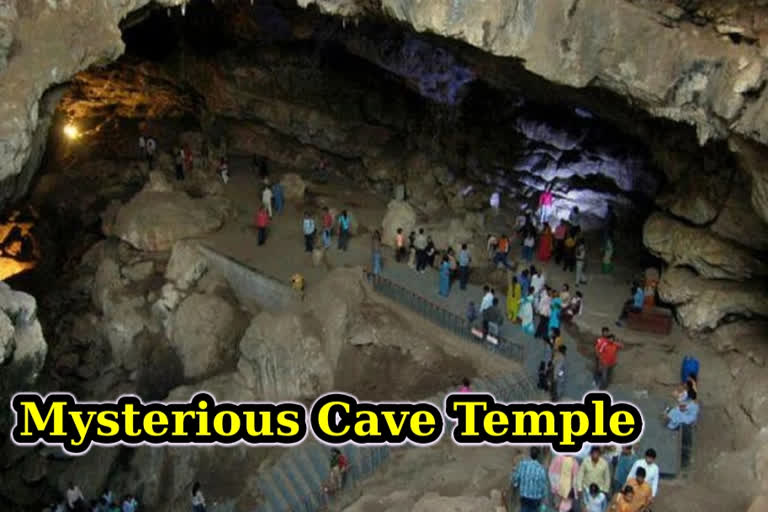Pithoragarh (Uttarakhand): Patal Bhuvaneshwar, a limestone cave temple, which is 14 km from Gangolihat in the Pithoragarh district of Uttarakhand carries several Puranic and mythological tales of Lord Shiva and Ganesha.
According to folklore, this cave enshrines Lord Shiva and the head of Lord Ganesh is situated in this cave. Located at 1,350 metres above the sea level, the Patal Bhuvaneshwar cave is 160 metres long and 90 metres deep from the main entrance.
One can have darshan of Kedarnath, Badrinath and Amarnath from Patal Bhuvaneshwar cave. There is a reference to this cave in the Skanda Purana.
It is believed that following the wrath of Lord Shiva, the head of Lord Ganesha was severed from the torso and fell in this cave. Later, at the insistence of Mother Parvati, Lord Shiva replaced it with the head of an elephant.
It is also believed that Lord Shiva kept the original head in the Patal Bhuvaneshwar cave.
"The head of Lord Ganesha is in the shape of rock above which there is another rock depicting Brahmakamal lotus of 108 petals, from which drops of nectar fall on Lord Ganesha's head. The main drop falls in the mouth of Lord Ganesha. It is believed that the Brahmakamal was established here by Lord Shiva," locals said.
What history says?
It is mentioned in the Puranas that Lord Shiva resides in this cave and all other Gods visit the cave to worship him.
According to ancient belief, King Rituparna of the Sun dynasty discovered the cave in Treta Yuga. In Kali Yuga, Adi Shankaracharya visited this cave in 722 AD. That was the beginning of the modern pilgrimage at Patal Bhuvaneshwar. He covered the Shiva Lingam with copper because it was so bright that whosoever saw it would go blind. The cave was later discovered by the Chand Kings. Since then regular worship and offerings are being done at this place.
At the entrance of the cave, one can see Lord Narasimha. A little further down there is a stone in the shape of the hood of Shesha Naag. It is believed that the Earth rests on the Shesh Naag. Further down there is a rock in the shape of the udders of a cow which are believed to be of Kaam Dhenu. During the times of Gods, milk used to flow from these udders. Today, water flows from them.
It is said that the darshan at Patal Bhuvaneshwar yields a thousand times the fruit of tapasya at Kashi, Baidyanath or Kedarnath. The priest family, the Bhandaris are performing religious rituals at Patal Bhuvaneshwar since the time of the Adi Shankaracharya, for more than 20 generations in the line. They are a treasure house of legends, lores, anecdotes and information about this holy place.
Doomsday and its connection with Patal Bhuvneshwar
The local legend states that the secret about the occurrence of doomsday is hidden or related to Patal Bhuvneshwar cave. In addition, one of the Puranas mentions that anyone willing to experience the presence of a strong divine power should visit this cave which lies at the confluence of Gupt-Ganga, Ramganga and Sarayu Rivers. All the deities are believed to be residing in their astral form with Lord Shiva inside the womb of this cave. Such is its significance.
ALSO READ: Bhopal-based sculptor makes Ganesha idols with extracts of 76 medicinal plants



